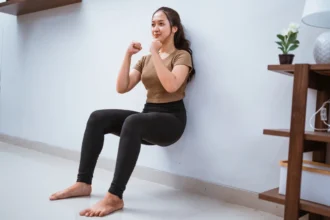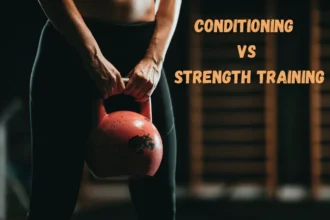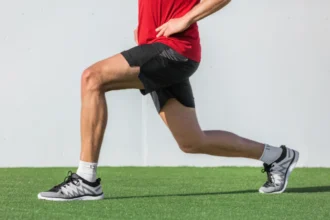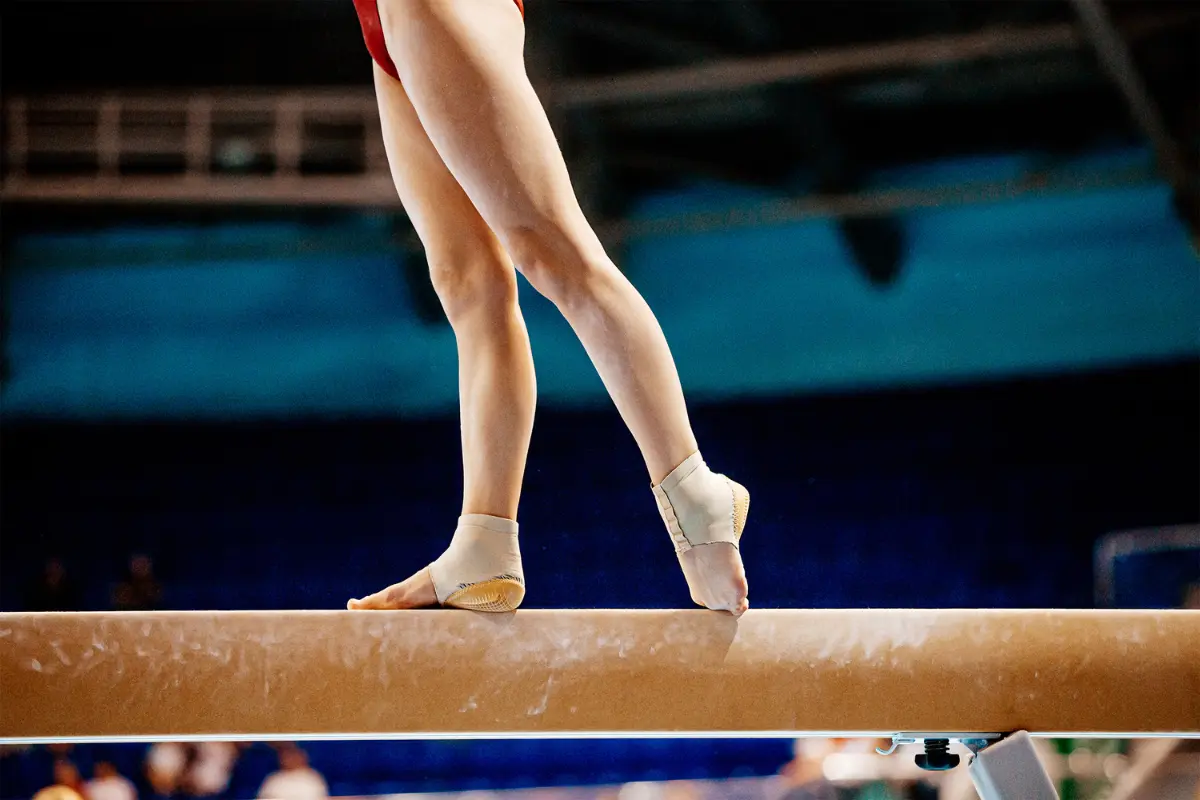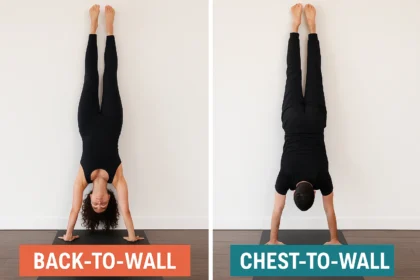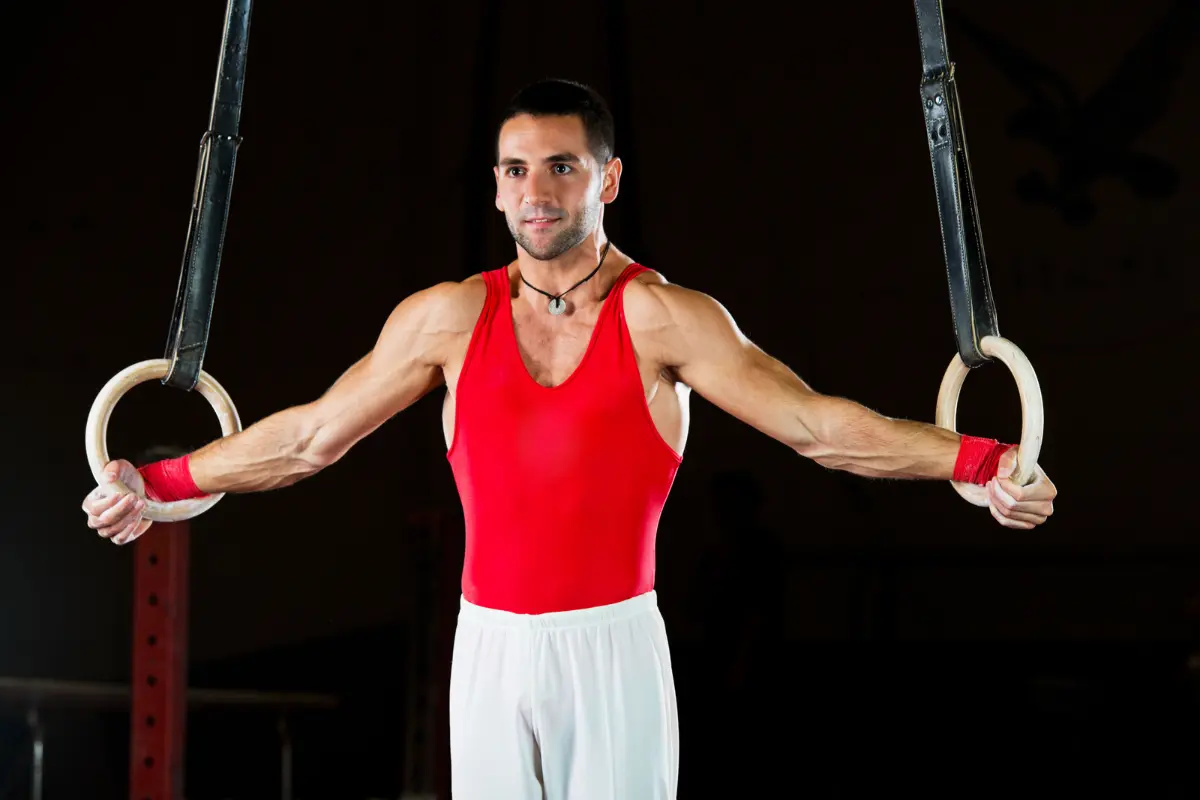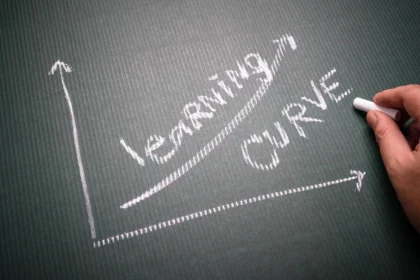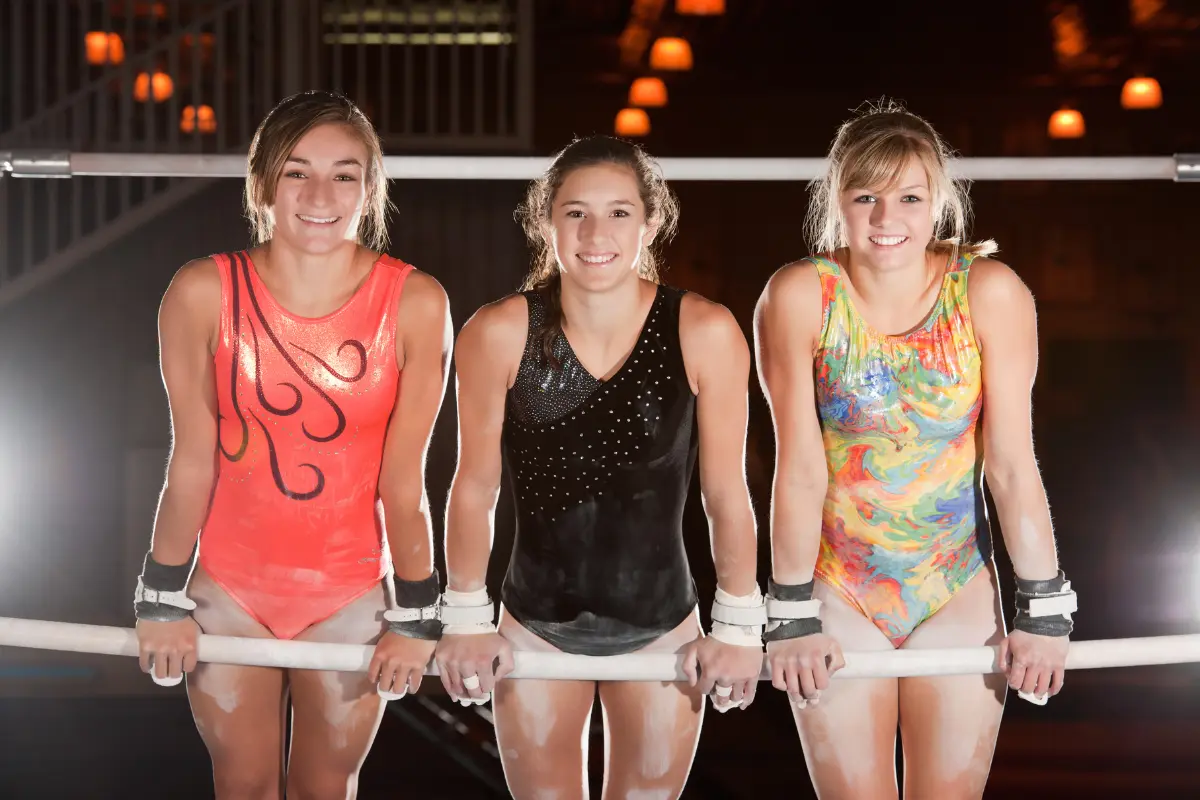Balance isn’t just about luck—it’s a skill you can build. Staying on the balance beam might look effortless, but every step takes focus, control, and practice.
This guide walks you through the core strategies gymnasts of all levels use to stay centered, steady, and confident—from the first mount to the final salute.
Contents
Build Your Beam Posture From the Ground Up
Before a gymnast can stick a cartwheel or float through a routine, she needs one key thing: strong posture. On beam, good posture isn’t just standing tall—it’s how your body stays stacked and ready to react when things shift. It starts with the feet and works all the way up.
Neutral Tripod Foot
Balance starts with your feet. The beam is only 10 centimeters wide—about the width of a phone—so how you place your foot really matters.
To stay steady, follow the “tripod” rule. Press into three spots:
- The ball of your big toe
- The ball of your little toe
- The center of your heel
This helps create a stable base and keeps your arch lifted. A strong arch gives your foot room to adjust naturally. But if it flattens or grips the beam too tightly, your whole body can tense up and throw off your balance.
Try this tip: Picture three thumbtacks under those pressure points. Lightly press each one—just enough to stay connected without “crushing” them. Your feet will stay grounded but flexible, ready to adjust quickly.
💡 Want a visual? Search for “3-point foot drill” on YouTube or TikTok.
Soft Micro-Bend in the Knee
Next up: your knees. While locking them might feel stable, that stiffness works against you. A locked leg can’t absorb movement—it acts like a rigid pole. The smallest shift can throw your entire body off.
Instead, keep a gentle 2° to 5° bend in your supporting knee. This activates your quads and hamstrings, turning the leg into a spring that absorbs motion and helps keep you balanced. You won’t feel like you’re moving much—but your body will quietly adjust every time you feel even the tiniest wobble.
📖 Backed by postural control studies from PMC and kinesiology labs.
Hips Stacked Over the Ball of the Foot
Now, focus on your hips. They’re the connection between your lower body and your core. If they’re out of line—even a little—everything else has to work harder to keep you steady.
A small pelvic tuck helps a lot. Imagine your belt buckle pointing straight down to the beam. This keeps your weight centered, so you’re not leaning too far forward or arching back.
Use the cue: “Belt buckle to beam.” When your hips are in the right place, your upper body can stay calm, your core turns on, and your arms can move without overcorrecting.
Engage Your “Beam Core”
Once your base is solid, the next layer of balance comes from your core. But we’re not just talking about abs—you need support from your whole midsection: front, sides, and back. On beam, it’s less about strength and more about control.
360-Degree Bracing: Be the Soda Can
Think of your core like a soda can. When it’s full and sealed, it’s strong from all sides. But if it’s crushed or bent, it collapses easily. That’s how your torso should work on the beam—stable all around, not just in the front.
A great exercise for this is the dead bug. It teaches your deep core muscles to activate while you move your arms and legs—just like you do in gymnastics. Try it on a beam line or while lying across a foam roller to mimic the beam’s narrow width.
Oblique Power: Control the Side-to-Side Wobbles
Here’s something most gymnasts don’t realize: most balance beam wobbles don’t throw you forward or backward. They knock you side-to-side—which means your obliques are your secret weapon.
Want to train them? Two easy drills:
- Suitcase carries – Walk holding a weight in one hand. Your core has to work extra hard to keep you straight.
- Side plank pulses – Hold a side plank and pulse your hips up and down.
Doing just a few sets of these a week can make a big difference in how steady your landings, turns, and leaps feel.
📚 Backed by studies in PMC and PubMed on trunk control and lateral core activation.
Calibrate Your Proprioception
Ever heard your coach talk about “body awareness”? On beam, that has a name—proprioception. It’s your body’s built-in GPS. It tells your brain where your limbs are, how they’re moving, and how pressure shifts under your feet. The sharper it is, the better your body can fix a wobble before it becomes a fall.
The good news? You can train it.
Eyes: Fixed, But Not Frozen
Many beginners are told to stare at one spot. But top gymnasts do the opposite. They let their eyes glide—gently tracking an invisible line that stretches past the end of the beam.
Why? Because a moving gaze helps your balance. It keeps your head and neck relaxed and supports the balance sensors in your inner ear.
Try this: next time you’re on the beam, imagine your eyes following a string just beyond the end. Keep your focus soft and steady—like you’re looking through the beam, not locking on one dot.
🔬 Supported by vestibular balance research from beam simulation studies on ResearchGate.
“Ear-Off” Drills: Sharpen the Other Senses
Want a quick trick to boost focus? Wear foam earplugs during warm-ups or beam basics. It sounds strange, but when you block sound, your brain tunes in more to visual and balance cues.
This technique—called sensory reweighting—makes your body rely on the senses that matter most on beam. When you take the plugs out, you often feel more tuned-in, balanced, and aware.
Try it for a few minutes once or twice a week, especially before routines or turn sequences.
Texture Overload: Wake Up Your Feet
The soles of your feet are loaded with nerve endings that respond to pressure, stretch, and surface texture. When you give these nerves more feedback, your body becomes better at making fast, accurate corrections.
Your feet are full of nerve endings that sense texture and pressure. Giving them more feedback helps your body adjust faster.
Try this:
- Wrap a chalky loop band under your arch, or
- Slide a textured insole into your beam slipper.
Walk across a low beam with the added texture. Then take it off and walk again. You’ll likely notice your feet reacting faster and your balance improving.
📖 Supported by PubMed studies on foot stimulation and dynamic balance improvement.
Refine Your Footwork
Even with perfect posture and a strong core, one bad step can send you off the beam. That’s because balance isn’t just about standing still—it’s about how you move from one skill to the next. Every walk, turn, and landing needs precision.
Let’s look at three small footwork habits that can make a big difference.
Heel-to-Toe Roll: Stay Smooth, Not Stiff
When walking on the beam, don’t step flat-footed. Instead, roll your foot from heel to toe, like you’re walking on a tightrope. This smooth motion helps your body adjust naturally with each step, keeping your rhythm steady.
Stomping or stopping mid-step can throw off your balance. Rolling keeps you moving and gives your brain time to react to tiny shifts.
🔍 For more, check out ScienceDirect or the “Science of Falling.”
Relevé “Lock and Load”
Relevé isn’t just pretty—it’s powerful. When you rise onto the balls of your feet and lift your heels, your calves and ankles store elastic energy. That gives you extra lift and control during turns, leaps, and corrections.
Think of your heel like a loaded spring—ready to help you bounce back when needed. But if your relevé is low or wobbly, you lose that power.
Cue to remember: “Lock and load.”
🔬 Based on biomechanical studies of ankle and tendon response during balance correction.
Diagonal Landings: More Grip, Less Slip
When you land a skill, don’t land flat and straight. Try to touch down at a slight diagonal—so your foot lands corner-to-corner on the beam.
Why it works: A diagonal landing spreads out the impact and gives your foot more grip. It helps reduce the chance of slipping or twisting, especially on hard landings.
Cue: “Land like a plane, not a brick.”
📚 Supported by ResearchGate studies on safe landings and beam mechanics.
Master the Art of “Quiet Arms”
On beam, your arms can be your best friend—or a silent score-killer. Wild arm swings might save you from falling, but they also draw the judges’ eyes straight to the mistake. In both the Xcel and Development Programs, unnecessary arm or trunk movement can result in up to a 0.10 execution deduction. (USA Gymnastics – General Deductions)
That’s why elite beam workers train their arms to be quiet stabilizers, not dramatic saviors.
Pendulum Stops: Train the Brakes
This drill is easy but powerful. Stand in relevé on a floor line or low beam. Gently swing your arms forward and back—then suddenly freeze them.
This teaches your body how to stop movement fast, without letting it spread through your whole body. You’re training your upper body to act like brakes—strong and smooth.
Over time, your arms will know how to hold still without wobbling.
Thumb-in-Seam Walks: Let Your Core Do the Work
This one’s deceptively hard. Walk across a line or low beam with your thumbs lightly touching the seams of your leotard or shorts. Your arms can’t help you now—so every balance correction must come from your feet, ankles, knees, and core.
Use this as a pre-routine reset or include it in warm-up circuits. Bonus: it doubles as a focus drill.
📹 Coach Meggin’s tutorials on YouTube offer great walkthroughs of beam posture and arm control like this.
Bringing It All Together
No one drill guarantees success on the beam. Instead, consistency is built by layering dozens of tiny habits—each one refining your balance, your awareness, and your reaction time. What starts as a conscious effort eventually becomes an automatic correction.


